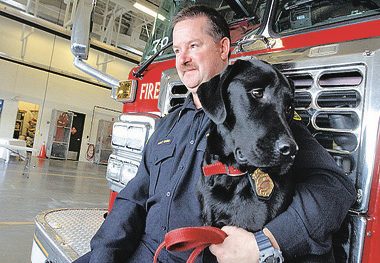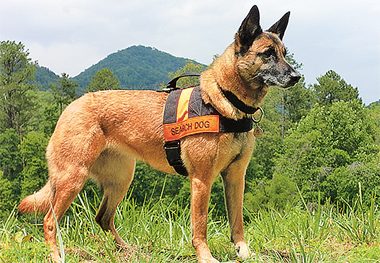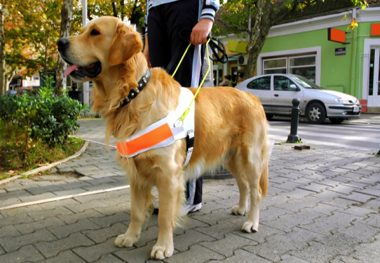
Catching Fire
Each year, more than 130 buildings in Calgary go up in flames under suspicious circumstances. When that happens, the Calgary Fire Department enlists Gibbs, a playful, eager-to-please 21-month-old Labrador retriever, to enter the burned-out halls and zero in on where and how the fire started. Gibbs, along with fellow fire dog Honey, has been trained to sniff out 220 known fire accelerants, from Coleman fuel to kerosene, explains fire investigator Tony Bund, Gibbs’s handler, roommate and near-constant companion. “It’s the Tony and Gibbs show; everywhere I go, Gibbs is there,” he says. So far, Gibbs has worked on 10 fires since his debut in early September 2013. The pair starts and ends each day with smell tests to sharpen Gibbs’s skills-and to discourage him from strategizing. Early on, the puppy figured out that he could get more treats by pretending to find fake fire starters. “So we mix things up to keep him honest,” Bund says.

Dead in the Water
When Ottawa’s search-and-rescue ops make the grim transition to body recovery missions, officials get a little help from Breeze, a five-year-old Malinois. A member of the non-profit Ottawa Valley Search and Rescue Dog Association, Breeze is a cadaver dog trained to sniff out human remains, be they deep underground or even underwater, in exchange for some quality time with her favourite toy. If they’re looking for a drowning victim, says handler Kim Cooper, they simply park Breeze at the front of a boat and cruise back and forth waiting for her to bark. Training for this job is a grisly business: Cooper teaches her dog using real human tissue, bones and teeth. It also means teaching Breeze to suppress her retrieval instincts so she doesn’t disturb any potential crime scenes. Searches are tiring, but Breeze, along with the other two cadaver dogs that make up her unit, does it because a successful find means she’s given time to play fetch with her ball toy. “It makes no sense, but she’s crazy for those balls, it’s almost obsessive,” Cooper says.

Hero Dogs
For hard-working pooches not cut out for a life of fighting crime, there’s always the elite ranks of Seeing Eye dogs. Canadian Guide Dogs for the Blind has provided more than 500 guide dogs to the visually impaired since its 1984 founding. The dogs are selected almost from birth, but before they can enter formal training, they spend about a year with volunteer foster families known as “puppy walkers.” The organization is always looking for new families to spend months acclimatizing the dogs to busy places like theatres and shopping malls before “graduating” them to CGDB’s national training centre in Manotick, Ont. Any adult in Ottawa, Montreal, Toronto, Victoria or Vancouver can sign up, so long as they can promise to spend up to 18 months with a puppy constantly at their side.